With the Communists fighting both the Japanese invaders and the Guomindang reactionaries in a triangular war, the 1930s–40s was a tumultuous period in the country’s history, resulting in the deaths of tens of millions of Chinese, mostly civilians. Such an earth-shaking era was story-worthy to say the least, and revolutionary authors applied their firsthand experience of the war years to penning fiery, action-packed page-turners in the socialist realism tradition. Among the best known of these novels, all written in the late 1950s–early 1960s, were Liang Bin’s Keep the Red Flag Flying (红旗谱), Qu Bo’s Tracks in the Snowy Forest (林海雪原), Yang Mo’s The Song of Youth (青春之歌), Liu Qing’s Builders of a New Life (创业史), and Luo Guangbin and Yang Yiyan’s Red Crag (红岩) (all also published in English by the Foreign Languages Press in Beijing). This flowering of communist fiction dried up during the Cultural Revolution. To Jiang Qing, the wife of Mao, nothing was quite revolutionary enough to pass muster and she banned practically everything, including the aforementioned novels.
The decades since have presented a quandary for Chinese writers. With socialism firmly established and war and devastation a thing of the past, in the absence of some new vital struggle or national emergency, it must have been, and continues to be, a tall order to revisit the authentic socialist realist novel. That is until the contemporary female writer Zhang Lijia saw what was staring at us all along and has now fashioned into an impressive new work of socialist realism, the novel Lotus (Henry Holt & Co., 2017). What momentous cause was it that this up-and-coming author was the first to bring into urgent focus? None other than the great scourge of prostitution and sex work.
Mao succeeded in eradicating prostitution from China in the 1950s, and the country remained free of the cancer until the post-1978 “Opening Up.” It seems you can’t have economic growth and free markets without allowing the bad in with the good. Over the past four decades the number of prostitutes has rebounded with a vengeance. Millions have become entrapped in the sex trade, forced by poverty to hand over their autonomy and dignity to the pimps and madams running the brothels, KTV venues and massage parlors lining every city and town in the country. Even supposing some of these women enter into sex work of their own accord (outright kidnapping and child slavery appear to be a greater problem in South Asia), the cycle of economic hardship keeps them in this occupation throughout the prime of their life.
Until the release of Lotus, few books or publications shed light on the industry in the mainland, as no state-approved publishers would permit frank discussion of the topic, even when fictionalized. Originally, this taboo stemmed from the official claim that prostitution did not exist in China; to write about it could have gotten one in trouble for spreading lies. Today, sex work is officially acknowledged, but because it’s illegal, what writer wishes to implicate herself in the trade by divulging intimate knowledge about it, even from a critical perspective? Zhang surmounted this hurdle by penning her novel in English and publishing it abroad.
Interestingly as well is Zhang’s decision to adapt her story to the socialist-realist format. It might be assumed the subject matter would be better suited to a straightforward investigative-reportorial style in the gritty, realist tradition of early twentieth-century American novelists such as Theodore Dreiser and Upton Sinclair. After all, her book is based on reality; she researched the industry and interviewed sex workers in a variety of venues to create the composite massage parlor where Lotus, the book’s heroine, is employed. Unlike realism, however, socialist realism does not seek to represent a faithful picture of surface reality, such as what a photographer or news reporter might see on the scene. The problem with this so-called impartial or objective documentarian approach is that the confrontation with the abject is liable to plunge the reader into cynicism or despair. Socialist realism, by contrast, has a motivational, indeed militant, consciousness-raising purpose. It demarcates the revolutionary from the reactionary and casts class struggle as fundamentally optimistic, inspiring the reader and setting an example to follow.

In socialist realism, characterization is starkly delineated into good and evil prototypes, even to exaggerated effect where necessary. For example, the righteous rage felt by the peasants in Liang Bin’s Keep the Red Flag Flying, whose lands are left unprotected from flooding because evil landowners have stolen the funds intended for dyke construction, is foregrounded at every turn: “Zhu’s nostrils flared and he charged, his arms like flails. He caught Feng’s wrist. ‘Damn you, Feng! Say that again!’ His eyes nearly burst from their sockets. He was panting with rage.” To reinforce the violence of such emotions for the reader, they must be continually repeated: “Zhu Laogong’s lungs nearly burst with rage. Glaring at Big Heart, he spat out two mouthfuls of blood. Then he fell to the ground, his face the color of wax.”
Zhang Lijia too thrusts stage center an updated version of class conflict, embodied in the figure of the hapless peasants of Lotus’s village in Sichuan. Communist Party corruption is ubiquitous above all in the provinces. It’s these harsh conditions of rural poverty that drive Chinese girls such as Lotus into sex work in the first place. Note again the telling visual details that serve to create a memorable tableau which sticks in our mind and raises our consciousness in the process:
Luo Kecheng pushed his sleeves farther up, as if ready for a fight. “In this place, ‘heaven is high and the emperor is far away.’ The local officials are all corrupt. They build grand office buildings for themselves and always have lavish banquets. Where’s the money from? From us, from our blood and sweat….agriculture tax, irrigation taxes, family planning administration fees, and ‘donations’ for a road that had never been built.” Luo Kecheng continued…the veins in his neck bulging. “When I refused to pay the extra tax earlier this year, guess what happened? The village officials sent thugs to beat me up, as if I were a criminal. Those tamade turtles!” He spat hard on the ground. His phlegm rolled into a dust dumpling.
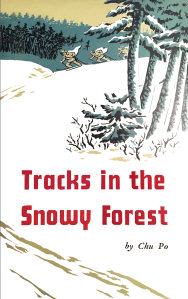
Another important technique in socialist realism is transparent correspondence between personality and physiognomy or physique. We do not want to confuse the reader with complex or ambiguously rendered characters whose appearance can’t be immediately “read.” Revolutionary male heroes must be depicted as tall, strong and handsome, with dark brows and honest, penetrating eyes; revolutionary heroines are expected, of course, to be beautiful, which follows from their unblemished nature. To take an example from another novel mentioned above, Qu Bo’s Tracks in the Snowy Forest, the young heroine, White Dove, is “very pretty, with cheeks as pink as roses. Deep dimples flickered in the corners of her constantly smiling mouth. Her large beautiful eyes flashed so gaily it seemed they could almost speak. White Dove wore braids which hung beside her ears, and feathery tendrils of hair played about her forehead and temples.” In contrast, we have an example of evil physically incarnate in this description of the KMT bandit Butterfly Enticer:
An incredibly long head perched on her neck like an ear of corn. In an attempt to disguise her fantastic ugliness, she covered her enormous forehead with bangs right down to her eyebrows….The combination of dry yellow skin and the black freckles made her face even more revolting. She coated it with powder, so thickly at times that the powder flaked off when she blinked her eyes. Because her teeth had turned black from opium, she had them all crowned with gold. When she smiled, the glare was painful.
That Lotus, the heroine of Zhang’s novel, is beautiful goes without saying, though again it’s not the sophisticated glamor of the city girl but the natural innocence—her face “the shape of a sunflower seed”—of countryside femininity: “She wasn’t the showy sort who lured people into turning their heads in the street, but rather the sort that could endure scrutiny: the longer Bing looked at her, at those symmetric features as delicate as the finest embroidery, the more beautiful she seemed.”
The males patronizing Lotus are as a matter of course suspicious and degraded types, their nature outwardly manifest in their appearance and manner. The client nicknamed Funny Eye, though endowed with a good physique, has a “squint eye” and a “lopsided smile.” Others are “thuggish” and violent, or merely unappealing losers, such as the businessman with “pathetically thin legs and a potbelly,” his male member also repugnant: “It was red and shining, especially its turtle head. After five minutes, which seemed like an eternity for Lotus, the client gave up. ‘You’ll get used to it,’ he said good-naturedly. He then finished the job himself.” Likewise, the sordid description of the rapist who took her virginity, who “opened her legs like a pair of scissors….Moments later, the man let out a short and high-pitched groan and collapsed on top of her. He smelled of sweat, cigarettes, and grease.” In a police lockup after being arrested in a brothel raid, Lotus is forced to strip in front of an officer. She “caught sight of the bulge in his uniform pants. His face was now the color of a pig’s liver.” The paid-for sex act is absurd and repellent as well, exemplified by the client ironically named Family Treasure: “‘Oh, my Little Heart, I spent the whole day looking forward to this.’ He pounced on her, like a hungry dog jumping on a piece of juicy meat, and planted more wet kisses on her face and neck. ‘Now tell me: am I your first for today?’ he asked.”
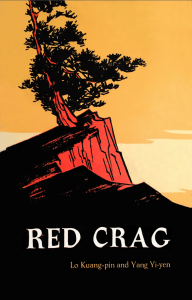
The man who rescues Lotus is a more sympathetic and attractive, if somewhat flawed figure, his credentials less than impeccable yet acceptable enough for the purpose of the narrative. Cultivating a bohemian look with a ponytail and goatee, Bing abandons the pressure-cooker world of shady business-dealings to become a freelance photographer in Shenzhen, a city with a vibrant sex trade. He is fascinated by the female nude, and lives in shabby neighborhoods to try to get in the good graces of sex workers he can persuade to photograph. Lotus at first refuses but feeling indebted to him after he bails her out from the police, she poses for him. If this might seem to represent a kind of prostitution, there is a key difference. At no point during his sojourn in Shenzhen’s underbelly does he ever compromise his principles and pay for sex, even massage, with any of the women he intermingles with. “A decent man with his own firm moral grounding and clear conscience,” he refuses to cross the line and exploit a woman sexually, least of all Lotus. He has by now fallen for her, and she reciprocates. When they do finally make love, it’s untainted by any history of monetary exchange. Accordingly, Bing is portrayed as a physically attractive enough figure, and—as a direct consequence—grows more so over time as he matures spiritually: “Now, in his middle age, his body had filled out and he felt more comfortable with his more sturdy, sophisticated appearance. And one day soon his ex-wife would realize how she had underestimated him.”
Nevertheless, the potential of their relationship is thwarted by a significant flaw in Bing’s character, that of vacillation. Instead of committing himself to Lotus in marriage, and thus once and for all rescuing her from her perilous profession, he leaves Shenzhen for a photography assignment in Beijing and an opportunity to advance his career. She is left in the lurch, and though he later returns to try to patch things up, she has moved on. The novel ends on an uncertain note, with Lotus achieving a degree of self-clarity and autonomy in her new role as a schoolteacher of migrant children, but at the cost of a fuller self-actualization that might have been realized with greater guidance. While no longer in the sex trade, she remains a solitary creature. This ambivalent ending, as opposed to a more decisive or victorious one, also constitutes the novel’s central limitation.
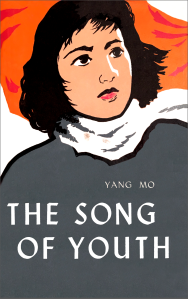
Here we might make an instructive comparison with what is considered to be the finest of the Chinese socialist-realist novels, Yang Mo’s The Song of Youth. The two novels have some intriguing parallels. Both chart the coming-of-age of a heroine, Lotus, and in the earlier novel, Lin Tao-ching. Both heroines are fortunate enough to encounter influential men who open their eyes, but in the case of Tao-ching it’s more complicated. She first meets—and marries—the scholarly but politically apathetic Yung-tse. He awakens her to the world of books but not to the calamitous events happening around them with Japan’s advancing occupation of China. Her instinct gets her swept up in these events anyway, and she then falls in love with a brave and handsome patriot, Chia-chuan, who introduces her to revolutionary literature.
Things are brought to a head when her husband tries to strongarm her back into her domestic role as submissive wife:
“Tao-ching, how lovely you are! Like crab-apple blossom or a beauty waking from a dream in spring….” Yung-tse, who had slipped quietly into the room, was gazing at her graceful figure as she lay there.
Tao-ching, ignoring him, picked up a book and buried her face in it. He went up to her and took the book from her hand, pulling a face at the title, Capital.
“What problems is this great disciple of Karl Marx studying now?” he asked with a smile.
“Why must you make fun of me?” she cried, her glance resting on him for a moment with the conviction that the Yung-tse whom she had loved had turned into someone quite vulgar and loathsome….Flinging her book on the bed, Tao-ching turned her back on him contemptuously.
Tao-ching arranges to hide Chia-chuan, on the run from the police, at her home. She cannot do this, however, without Yung-tse’s knowledge. In deft socialist-realist style, the author paints a telltale visual contrast between the two men in their encounter, the calm revolutionary and the anemic and agitated reactionary: “Chia-Chun looked quietly at Yung-tse’s bony, stooping shoulders—in his agitation he had not even troubled to take off his hat and the shadow of his head on the wall was like a large black mushroom, his lanky body representing the stalk.” Tao-ching quickly divorces Yung-tse, but not before he betrays Chia-chuan to the police. He is soon arrested and executed in captivity, and tragically they are not able to consummate their love. But he is the chief inspiration that sparks her political consciousness and provides the driving force for the remainder of the narrative. And it hardly bothers the author that the narrative is thenceforth devoted to the rapidly developing political events rather than the love story of its former half, for “how can love compare with our revolutionary cause?”

Unlike the protagonists in Lotus who are left drifting and unmoored from any political cause, Tao-ching understands she is no longer “an isolated individual” but “a fearless fighter in the vanguard to liberate her country and people.” Having joined a community of fellow activists and progressives, she is energized. This animates the narrative and suffuses the dialogue with intensity, purpose and fascination. As Shu-hsiu, a young revolutionary girl mentored by Tao-ching, announces, “‘You want to know where I’m going? You’ll never guess! The Party has agreed to my request—I’m to stop studying and go to a factory to work with the factory hands. Can you believe it? I’m going to be among workers!’ Excitement had made her almost incoherent.”
The gripping experience of reading The Song of Youth clarifies what’s missing from Zhang Lijia’s Lotus. She didn’t get the male protagonist Bing quite right, failing to imbue this halfhearted aesthete and drifter with energy and spirit, whereas she might have developed him into a motivational figure, a model revolutionary, and thereby transformed the story into a more consequential novel. What is missing in the hero and heroine is political inspiration, the knowledge of the one action that needed to be taken: the launching of a campaign to banish the sex trade from China, starting with grassroots organizing at the local level and eventual mobilization of the masses. Then the problem of the trajectory of their relationship would have been solved. No longer the story’s central preoccupation, it would have faded into the background in the face of the larger, emerging development of the sweeping away of prostitution on the national scale.
But Lotus does have a useful lesson to teach the writer of fiction. For I had long assumed so-called three-dimensional characterization to be the sine qua non without which no novel can pretend to literary status. I have been proven wrong. Traditionally, the more complex and fleshed out the character, and the more acute the protagonist’s inner conflict, the greater the reader’s corresponding capacity to empathize through shared psychological realism. But psychological realism has a built-in liability, that of entropy; the personality split from itself can never resolve into wholeness but only splits further ad infinitum. What if it’s, rather, two-dimensional, comic book-style characterization that is superior, and not just politically but aesthetically as well, in that it achieves a greater clarity of purpose, in contrast to the inevitably muddled results of complex characterization? In other words, why portray characters at variance with themselves, when we can eliminate ambiguity and confusion at the outset and move the reader with noble heroes whose outward actions follow from their shining appearance? In fact, this might just solve my writer’s block and I am now ready to plunge into my next novel!
* * *
More book reviews by Isham Cook:
The 1.3 billion-strong temper tantrum: Review of Arthur Meursault’s Party Members
The literature of paralysis: The China PC scene and the expat mag crowd
The ventriloquist’s dilemma: Asexual Anglo travelogues of China
Like this post? Buy the book (see contents). Now available on Amazon:

CONFUCIUS and OPIUM:
CHINA BOOK REVIEWS
Categories: China
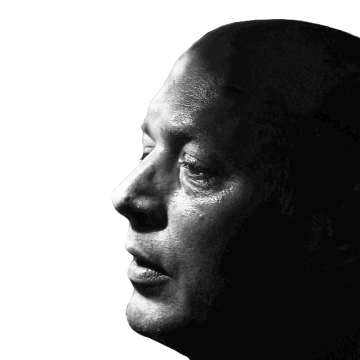
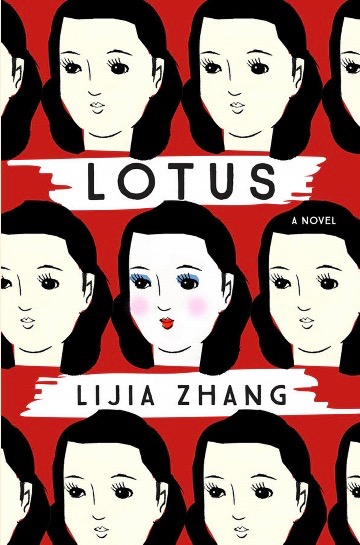


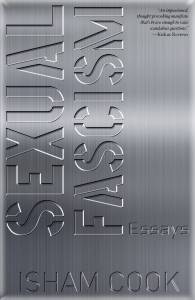
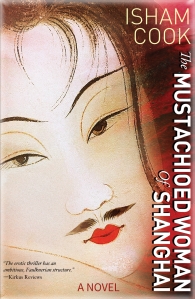









Thank you, Isham, for this survey of writing on the mainland that is of sufficient credibility for us to take a closer look. You have pointed out the worthwhile aspects of better examples of this typically agitprop genre, treating it even-handedly and with insight where many (or most) of the rest of us have dismissed it as “Commie schlock.” I’ll give Lotus a try, and some of the of the titles you mention as well. Probably with an eye to how they move forward from Camel Xiangzi, assuming that’s a useful point of departure.
What happened? When I clicked the link to finish reading the piece, the file was gone.
My webhost is working on it. You can access the full piece directly from my website or here: https://ishamcook.com/2017/05/17/lotus-updating-the-great-chinese-socialist-realist-novel/